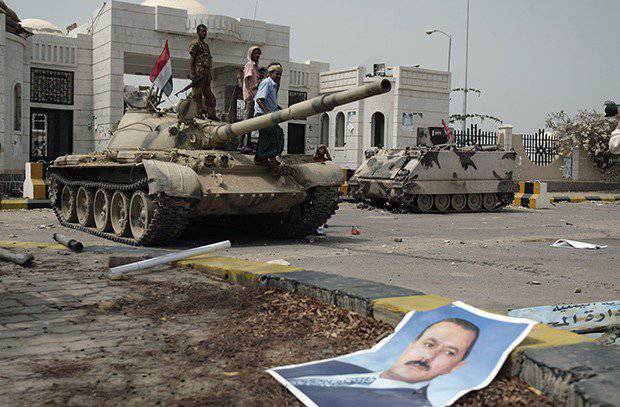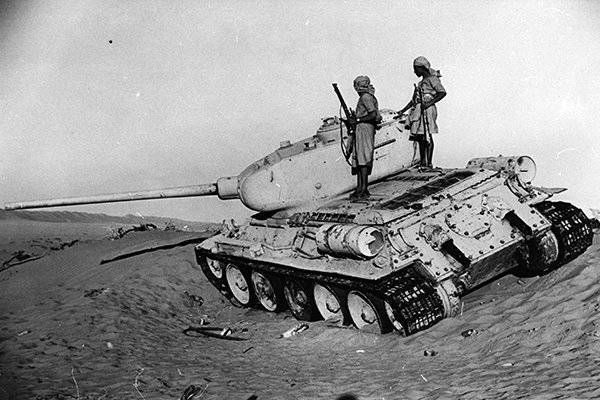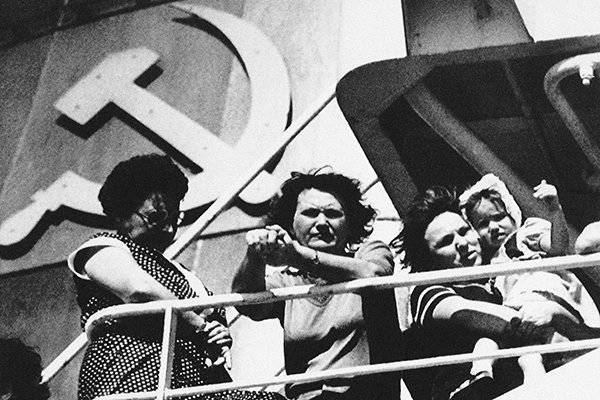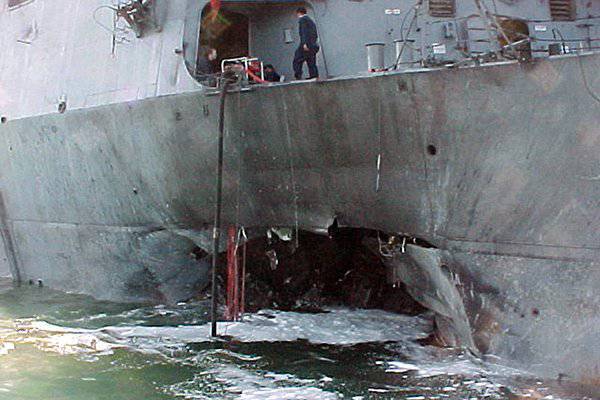Tu-16 against monarchists

"Russian Planet" studied the specifics of the war of the "north" and "south" in the Arabian Peninsula
The multi-year political crisis in Yemen, neighboring Saudi Arabia, could escalate into a full-scale civil war. In January of this year, Shiite rebels, supporters of the Ansar Allah movement, forced the president of the country to resign, the government and dissolved the parliament. Yemen is now governed by the Revolutionary Committee. Attempts by UN Special Envoy Jamal Benomar to establish a dialogue between political opponents have not yet been crowned with success.
The “Russian Planet” studied how the “north” fought the “south” on the Arabian Peninsula.
Located in one of the most oil-rich regions of the world, on the Arabian Peninsula, Yemen was completely deprived of "black gold". Therefore, it is now one of the most impoverished states of the Arab world and Asia as a whole. An additional problem for him was internal fragmentation - not only into tribes (this is typical of many Arab countries, including very successful ones), but also into two states. The division into the northern (Turkish) and southern (English) parts took shape in the second half of the nineteenth century. After the collapse of the Ottoman Empire in 1919, North Yemen became an independent kingdom, and South remained an English colony.
In September, a military coup took place in North Yemen, which resulted in the overthrow of the monarchy and the proclamation of the Yemen Arab Republic (YAR). The ideology of the new government was not openly communist, but clearly left, by the way, uniquely progressive for this country. In particular, slavery was finally abolished in the YAR. As often happened in the Arab world, the military turned out to be the most progressive part of society.
As expected, supporters of the overthrown king, with the support of Saudi Arabia, Jordan and Britain, launched a civil war in the country. It quickly grew into a classical war, because Naser of Egypt came to the aid of republican troops, of course, supported by the Soviet Union. Moscow began massive deliveries weapons Republican Army and Egyptians. From the summer of 1963 to the beginning of 1966, a permanent air bridge, Krivoi Rog - Simferopol - Ankara - Nicosia - Cairo - Sana, operated, through which the military transport An-12 of the USSR Air Forces flew with the insignia of the Egyptian Air Force. Normal loading of An-12 ranged from 4 to 12 tons of equipment and ammunition or 60-70 people of personnel (Egyptian soldiers and officers). Soviet military advisers appeared in the Yemeni Republican army.
The number of Egyptian troops in the YAR was quickly brought up to 40 thousand people (at maximum it reached 70 thousand). Egyptians used widely Aviation (including strategic Tu-16 bombers flying directly from Egyptian territory), which soon began to bomb not only the position of the rebel monarchists in Yemen itself, but also the territory of Saudi Arabia. She announced a general mobilization and turned to the United States for help. The Americans deployed several fighter squadrons to Saudi airfields and sent an aircraft carrier connection to the Red Sea. The British from South Yemen also inflicted several attacks on the troops of the YAR. Egypt and the USSR were not ready for a direct war with the USA and Great Britain for the sake of the Yemeni Republicans, so the war in Yemen took a protracted character. Jordan soon refused to support the monarchists, however, this support was not very noticeable anyway. Several attempts to declare a ceasefire have failed.

In 1967, events occurred that affected the course of the civil war. On the one hand, in June, Egypt suffered a crushing defeat in the Six Day War with Israel, which sharply limited its ability to support Republicans in the YAR. On the other hand, in July, the British were forced to leave South Yemen, where the People’s Democratic Republic of Yemen (PDRY) was proclaimed openly of a socialist orientation. In August, Cairo and Riyadh agreed on a mutual exit from the Yemeni civil war. In October, the Egyptian troops left Yemen. The war continued for another two years and ended with the refusal of the monarchists to continue the struggle with the condition of their inclusion in the republican authorities.
Two years later, a short-lived war broke out between the YAR and the Democratic Republic of Yemen (September-October, 1972). It did not bring any real results to either side. Another equally short-term and futile war took place in February - March 1979.
The YAR almost fell out of the number of allies of the USSR, now the former opponents of Washington and Riyadh had a much greater influence on Sana'a than Moscow. The YAR aircraft were equipped with both Soviet and Western weapons, in which T-55 and M60, MiG-21 and F-5 got along.
But Democratic Republic of Yemen became one of the main pillars of Moscow in the "third world". Aden has become the most important basing point of the Soviet Navy, allowing control of the Bab el-Mandeb Strait, i.e. out of the Red Sea. The Soviet military base also appeared on the island of Socotra. The North Korean Democratic Republic was fully equipped with Soviet weapons and regularly conducted joint exercises with Soviet sailors and marines.

In January, 1986, these same Soviet seamen and marines had to organize an urgent evacuation of compatriots from the Democratic Republic of Yemen, as well as many foreigners, including representatives of Western states, because a short but very severe civil war occurred in the country. According to its results, the Democratic Republic of Yemen seems to have remained in the Soviet sphere of influence, but by this time this concept was already rapidly losing meaning. In the 1988 year, a merger negotiation began between YAR and the Democratic Republic of Yemen, which officially took place in May 1990.
The formal peer unification in fact strongly resembled the annexation of the 3-million South by the 10-million North. The president of the united Yemen became the president of the YAR, creeping repressions against the former leadership of the Democratic Republic of Yemen began in the country. At the same time, the Armed Forces of the two countries, in fact, were not united, but were geographically intermixed (some units of the Armed Forces of the YAR were redeployed to the south, part of the armed forces of the NDRY - to the north).
In April 1994, in the north of the country, the armored brigade of the former Armed Forces of the Republic of Yaroslavl suddenly attacked and defeated the armored brigade of the former Armed Forces of the Democratic Republic of Yemen displaced there. The immediate causes of such a frank treachery are still not very clear. Of course, the parties blamed each other for what had happened and began to actively prepare for the war that unfolded in early May. Because of the territorial mixing of military units, the Southerners were able to attack from land and air Sana'a, and the northerners - Aden. Moreover, the Southerners made several strikes at Sanaa with P-17 ballistic missiles, widely known under the Western name Scud. The troops of the formally united country began deliberately destroying each other and smashing infrastructure.
The leadership of the Yemen Socialist Party (YSP), which previously ruled the Democratic Republic of Yemen, called for peace several times, but the President of Yemen (former YAR President) Abdullah Saleh immediately rejected all appeals. 21 May YSP proclaimed the restoration of an independent Democratic Republic of Yemen, but without the “H”, i.e. Democratic Republic of Yemen. The leaders of YSP have refused socialism, having quickly transformed into Islamists. After that, they immediately began to receive assistance from Saudi Arabia. Egypt and Syria also spoke on the side of the southerners, albeit purely verbally. In addition, the Southerners began to illegally buy weapons in Moldova and Bulgaria, but did not have much time to get. The northerners were supported by Iraq, Jordan, Sudan, Iran.
By the end of May, the parties practically knocked out the former personnel armies of each other, after which they began general mobilization. Here, the notorious advantage was on the side of the northerners simply in fact more than 3-multiple superiority in population. All formations of the former North Korean armed forces in the north were defeated; by mid-June, the war had completely moved to the south, and the northerners began the siege of Aden. In early July, the battles were already on the streets of the capital of South Yemen. These fights were extremely fierce, but the factor of the numerical superiority of the northerners was decisive. 8 July 1994, Aden fell, by the middle of July the war was over, the remnants of the Southerners left for Oman.
After that, Yemen gradually retrained in "the most important ally of the United States in the fight against terrorism," giving the US troops (primarily special forces) a territory to fight Al-Qaeda. At the same time, paradoxically, the creeping Islamization of the country began. Very quickly strengthened its position in Yemen, Al-Qaida in the Arabian Peninsula. This was facilitated by the continued internal fragmentation and the universal poverty of the population, with its equally total armament (each Yemeni family has at least one Kalashnikov). The very large forces of Yemen consist of many brigades (more than 50), each of which, in essence, is a tribal military unit. It is not surprising that it was in Aden that in October 2000 of the year the American destroyer Cole was blown up by a kamikaze boat, sustained heavy damage, then 17 seamen died.

In 2011, Yemen came under the “Arab Spring”. The first anti-government protests began in January, after which, in fact, another civil war occurred in the country, not between the North and the South, but between tribes on the basis of their relationship to President Saleh. Accordingly, the brigades of the Yemeni armed forces fought among themselves. This, of course, took advantage of Al-Qaida, which quickly established control over a number of regions. In particular, in May a multi-month battle unfolded for the city of Zinjibar in the south of the country, which the Islamists held until September. By November, numerous international mediators (primarily Washington and Riyadh) still squeezed Saleh, convincing him to resign and hand over power to the vice president, al-Hadi, who was successfully elected president in 2012. Interestingly, Saleh was accused of being undemocratic; this was one of the main reasons for his overthrow. Al-Hadi received an extremely "democratic" 99,8% of votes in the elections, but for some reason no one presented him any complaints.
However, despite such a staggering "popularity", al-Hadi, a former officer of the North Korean Republican armed forces, turned out to be an outsider for the northerners and a traitor for the southerners. Accordingly, he did not initially use any real support in the country. This led to a sharp exacerbation of the civil war between the army, Al-Qaeda and the Shiite minority living in the north of the country, and everyone in this “triangle” is considered opponents. The Yemeni government has the support of Riyadh, the Shiites - Tehran.
In September 2014, the Shiites took Sana’n at the actual inaction of the army, then the largest port on the Red Sea of Hodeidah fell. By mid-October, almost the entire territory of the former YAR was under the control of the Shiites. As for the former Democratic Republic of Yemen, its west and east are under the formal control of government forces, the center of this part of the country is held by Al-Qaida. However, after the resignation of the president and government of Yemen in January 2015, it is difficult to say what “government forces” are. In fact, the fact that the Yemeni Armed Forces was a set of tribal formations with the status of army brigades finally took shape. Al-Qaeda is now the only real opponent of the Shiites, which has put the United States in an extremely difficult position. Now they have to choose between two opponents.
Thus, Yemen, which has never formally fought with anyone, has been in a state of almost constant war for more than 60 years. And there is no doubt that everything is still ahead. The situation inside the country is such that there can be no talk of any world here.
Information